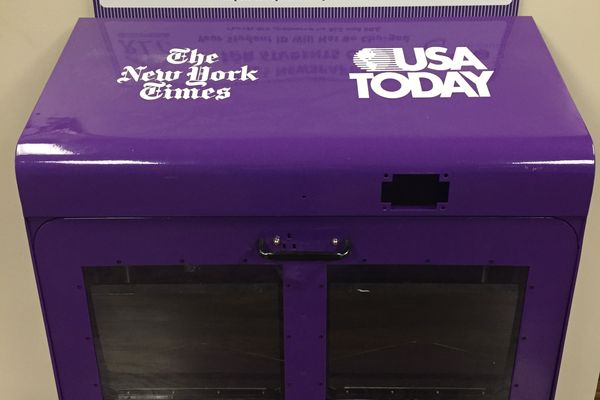You’ve probably noticed those purple newspaper boxes in and around Trone, Johns and the DH. Maybe you’ve also noticed they’re empty. We should change that.
Last year, a newcomer to Furman, I assumed this wonderful (free!) resource had been temporarily discontinued, as so many other things had, to prevent the spread of COVID. I could picture my future self wandering into the DH for breakfast, reading the opinions column of the New York Times over coffee and orange juice, enjoying a pandemic-free sophomore year. To my dismay, not only has COVID persisted (not to mention the disappearance of the DH’s fridge machines), the purple newspaper boxes remain stubbornly vacant.
I asked around and found that budget concerns and an SGA resolution, not COVID, terminated the newspaper supply several years back. Only faculty members and a few seniors remembered them being full.
These newspapers are worth bringing back for several reasons.
First, newspapers are superior to digital news content. Digital content often records your personal interests, dunking you into an echo chamber of tailor-made, catered information. A newsfeed focused on you makes for an unhealthy diet. Technology increasingly mesmerizes and isolates us, pushing away the tangible, the tactile, the here and now. I’ve seen a thousand news stories flicker past indistinguishably; I want something I can hold, crease, gesture with, and write on.
And how do you tell which of those thousand news notifications are worth your time, or, for that matter, true? Paper newspapers are valuable for their journalistic standards. Picking up the New York Times or USA Today, you don’t have to wonder if the front-page news items are trivial. Roomfuls of intelligent editors, reporters and journalists have fought over which story should make the front page, and the reader is always the beneficiary of these healthy disagreements.
Finally, a reintroduction of newspapers will create a sense of monoculture [could foster a shared sense of intellectual community] for students after a long period of separation and isolation. Professors have described to me, almost wistfully, how students used to file into class debating this or that review or article. Everyone could participate because everyone had read it. Want to renew a community’s cohesion? Provide it with common fodder to spark conversations, facilitate discourses, and clarify disagreements. I’m not exaggerating about the “community” part, either — a publication like the Times has something for literally everyone. A well-stocked system of newspaper boxes across campus could recreate this much-needed connection.
